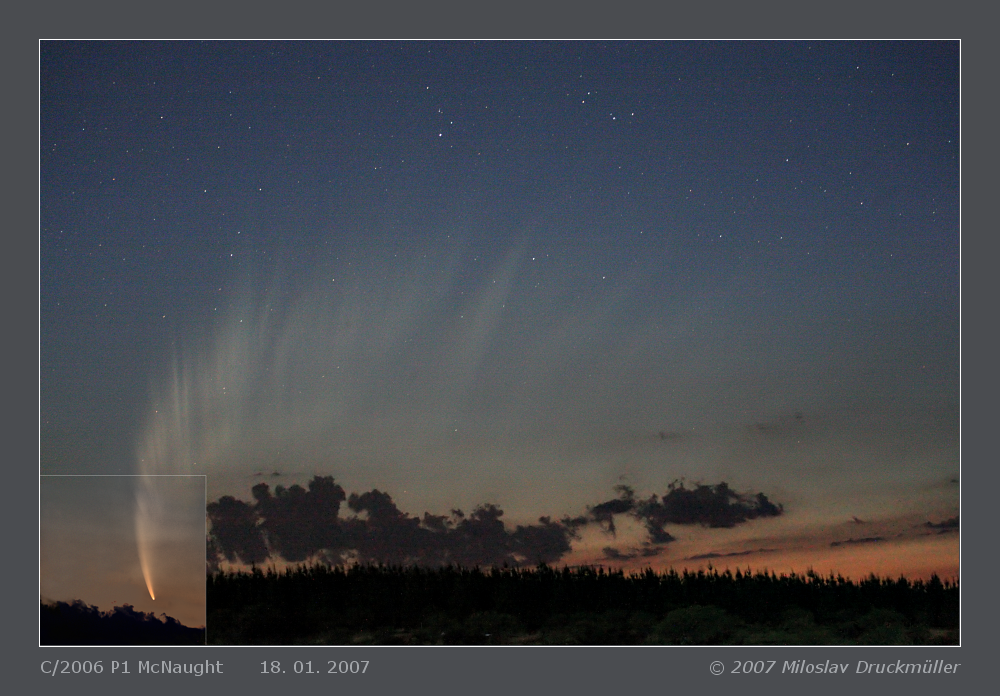This is the comet view at about 22:15 local time if there were no clouds covering the comet and we
would be able to look under horizon.
Although the weather was relatively good, there were some clouds above the western horizon.
Unfortunately they were all the time just on the comet position. Therefore it was not possible to
take one single image of the whole comet. The head of the comet disappeared beyond the
clouds at 21:54. The sky was not dark enough at that time to capture the more distant parts of comet's dust
tail. Therefore I used totally 12 images taken in time interval 21:53 - 22:16 of local time to
reconstruct the whole comet. It was rather complicated work because of the different contrast and
color balance caused by gradual dawn. The part of the image marked by the
frame consists of totally 7
images - one single image of the head
(1.6 s, ISO 500, 5.6/183 mm, 21:53)
and 6 images of the nearest part of the tail (5-10 s, ISO 500, 5.6/183mm, 22:01 - 22:04).
The majority
of the image consists of 5 images (10 s, ISO 3200, 6.3/70mm, 22:14 - 22:16)
taken at the time when the comet head was under the visible horizon.
Click on the image or on the following reference to display the
higher resolution image version (1.5 MB, PNG format).
|

